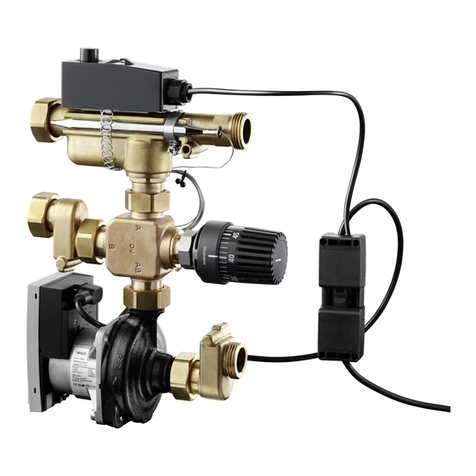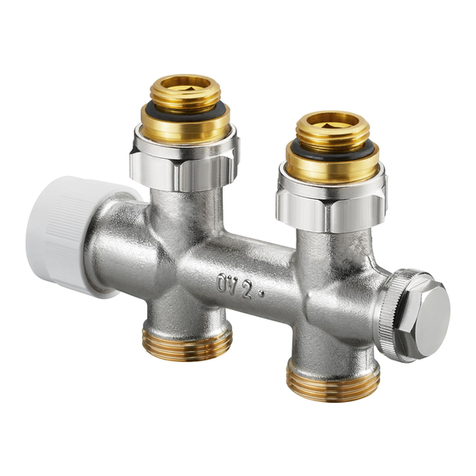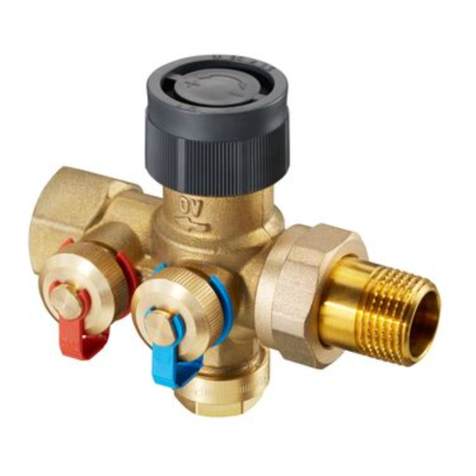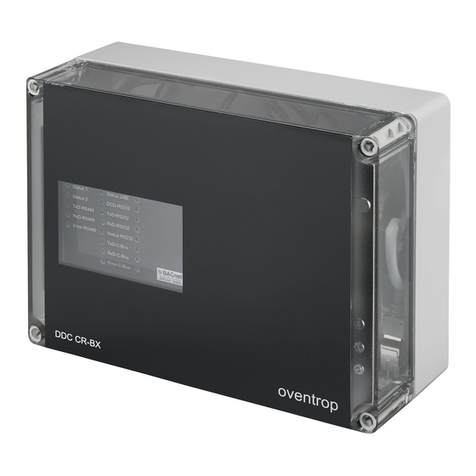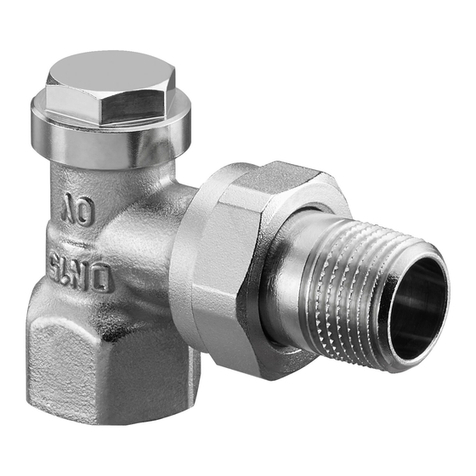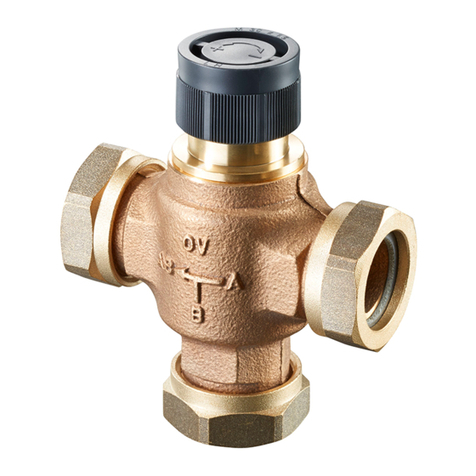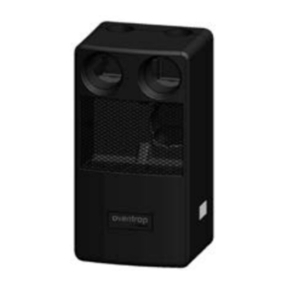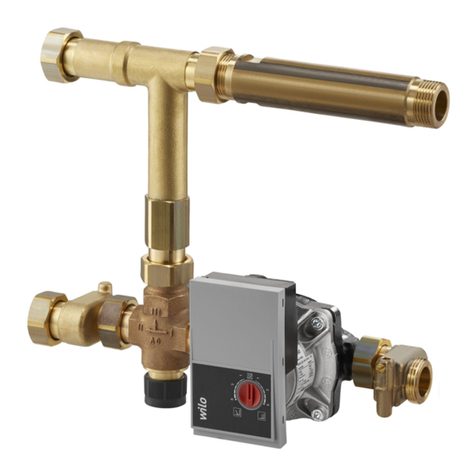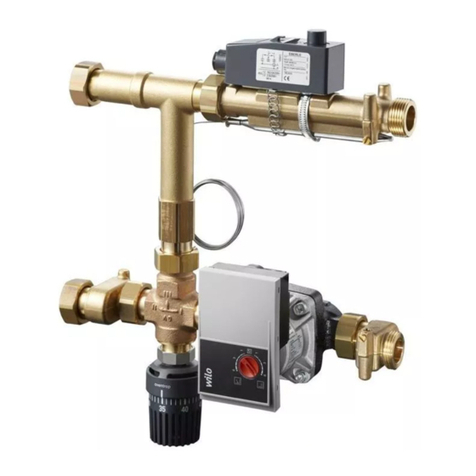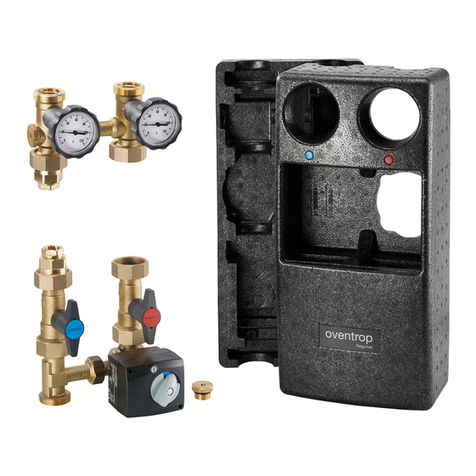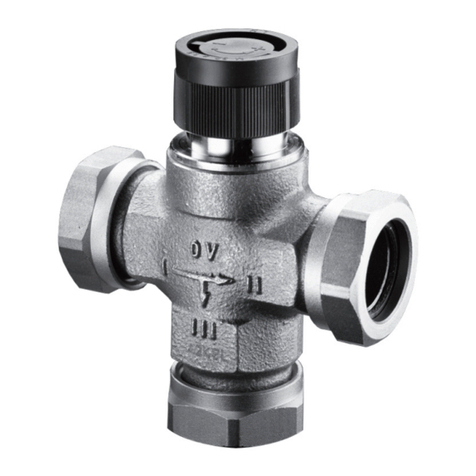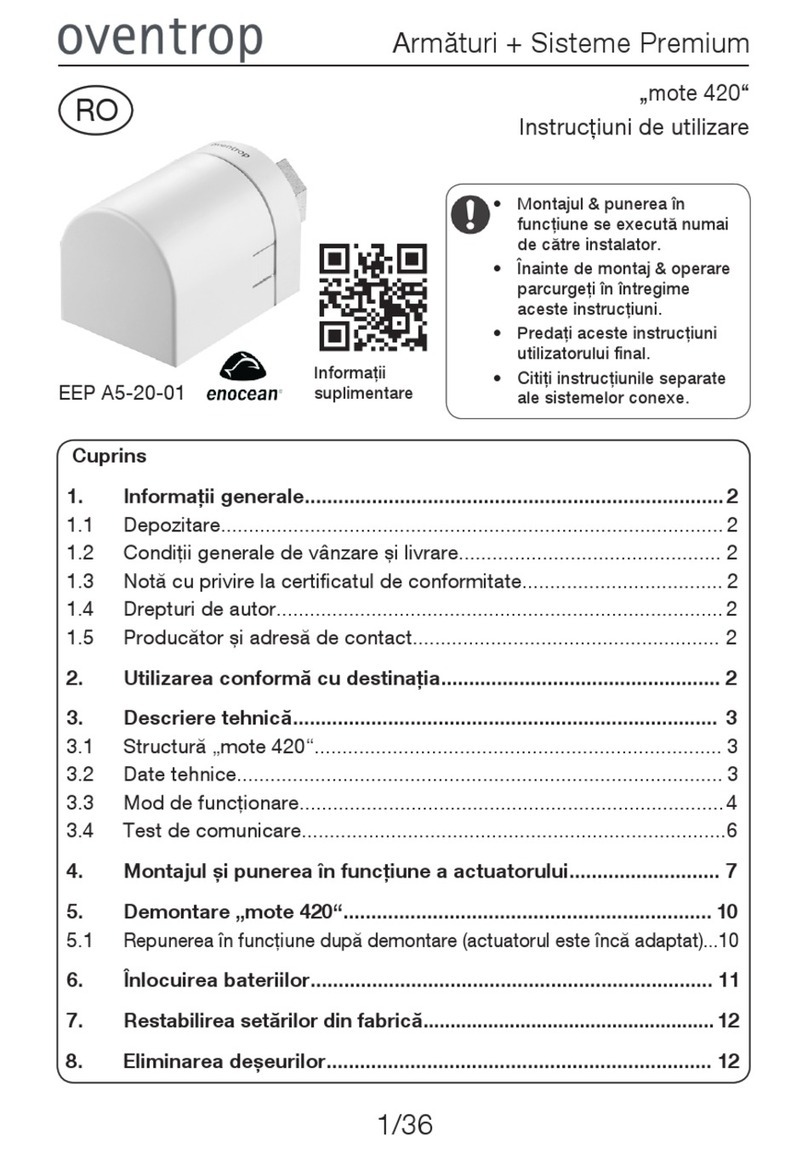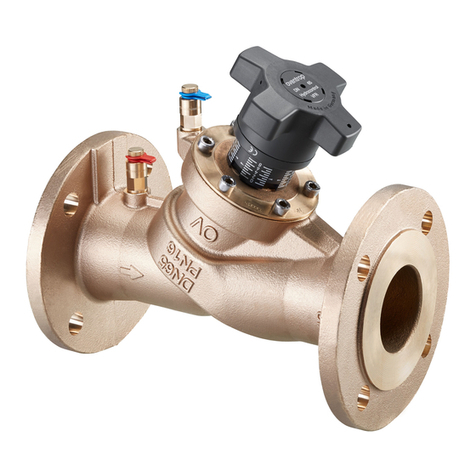
5. Construction and function
5.1. Functional description
The two-way valve with actuator is used temperature control in air-
conditioning and heating systems.
The actuator is driven by an unilateral motor with spring return.
The valve is closed with current “off”. If the thermostat provides a
current of 24 VAC the actuator will open the valve. Now the flow of
cool/hot water will cool/heat the room. When the set-point of the
room thermostat is reached the current will switch off and the valve
will be closed by the return spring. By this the room temperature
will be kept with the setting range.
The actuator has an lever for manual operation. If the actuator is in
manual mode the valve will be opened.
6. Installation and assembly
6.1. Installation of the two-way valve with actuator
Switch off current supply. The two-way valve can be installed
horizontally or vertically. In case of horizontal installations the
actuator must be positioned in an angle less than 85° (see illustr.
6.1a) to protect the actuator from water drops. In vertical
installations the actuator must be protected from water drops as
well.
6.1.1 Installation of the two-way valve (NPT-thread version)
The connection A is the water supply, connection B leads to
the air-conditioning/ heating system. (see illustr. 6.1b).
3
Use
)
correct tools to fasten the valve within the tube. Don’t use a
serrated pipe wrench to hold the valve.
6.1.2 Installation of the two-way calve (soldering type)
Connect the valve according to the flow mark on the body from
water supply to air-conditioning/ heating system. Avoid heating
up the whole valve during the soldering process, just heat up
the two soldering connections.
DANGER! Hot solder
Protect yourself with protection clothes and security glasses.
Use copper tubes of specification ASTM B88 : 99 Type
K, L or M. Tube size: ¾ inches
(outside diameter ⅞inches).
Use correct tools to fasten the valve within the tube. Don’t use a
serrated pipe wrench to hold the valve.
6.1.3 Electrical installation
Finally carry out wiring. Use a biscuit connector to connect the
installation cable. Ensure that the wire cannot touch any hot
surface.
Observe the valid local guidelines for electrical installations!
Only use UL-approved Class 2 power packs.
168 07 06 80 11/07
Illustr. 6.1a Installation in horizontal pipes
Illustr. 6.b Connections for installation
6.2. Removing the actuator for installation
If needed the actuator can be screwed off the valve. For
assembling the actuator again no tools should be used – just
fingertight fastened.
6.3. Leakage test
After installation a leakage test must proof the correct connection
between tube and valve.
7. Operation
7.1. Automatic Mode
In automatic mode the valve is closed with current “off”. If 24VAC
are supplied the valves will open.
7.2. Manual Mode
To switch from automatic to manual mode push the lever slowly
and put it into the retaining notch.
Watch your fingers! Don’t squeeze them!
Now the valve will remain be opened until the actuator gets a
24VAC current. Then the mode is switched automatically from
manual to automatic.
